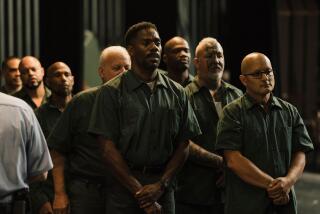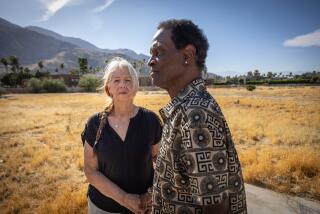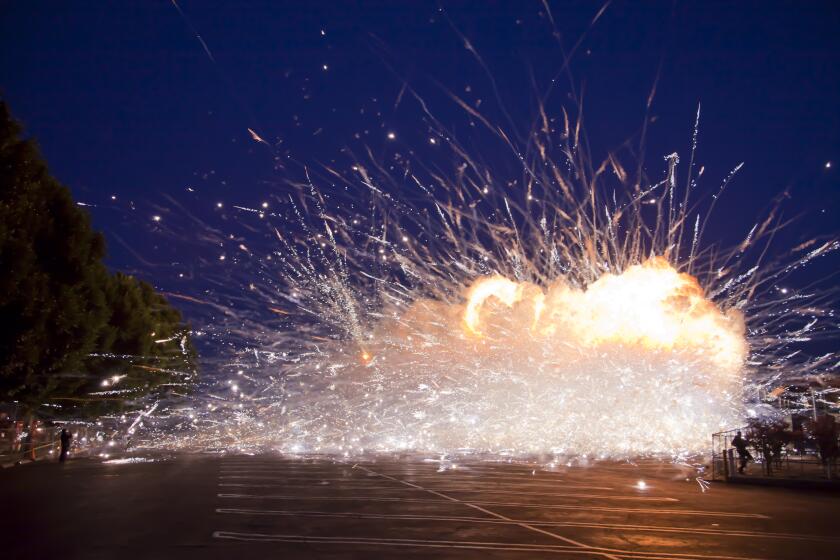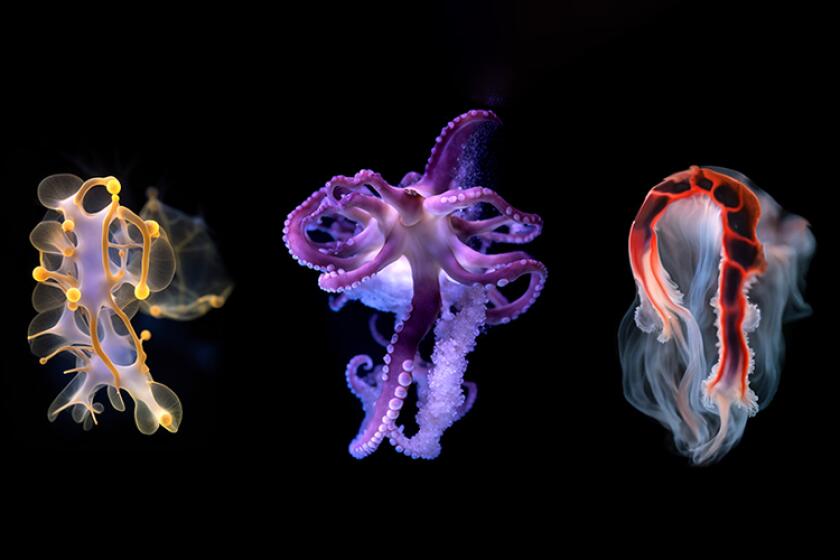Theater review: ‘Allegiance’ gives Japanese internment a soft focus
SAN DIEGO — Like “The Scottsboro Boys” and “Parade” before it, “Allegiance — A New American Musical,” about the internment of Japanese Americans after Pearl Harbor, attempts to confront a shameful episode in American history and rewrite it as musical theater.
Now in its world premiere at the Old Globe, “Allegiance” takes a different route from those dark, sardonic and largely successful shows about bigotry and racial hysteria. “Allegiance” presents a surprisingly mild story of family fractures, not an indictment of American failures. The story centers on the divisions within communities of Japanese Americans at the dreary “relocation” camps that sprang up in barren, isolated locations after President Franklin D. Roosevelt signed executive order 9066 within three months of the deadly attack by Japan.
Though peppered with promising scenes and powerfully sung by the largely Asian American cast, “Allegiance” retreats from the challenge of its own material and hasn’t found a consistent focus, tone or musical idiom. For all its historical reach and welcome significance, the book (by Marc Acito, Jay Kuo and Lorenzo Thione) drifts into two generic romances and in the second act meanders into sentimental warblings that family is “what really matters.”
Framed as a musical memory play, the 1940s action is bookended by contemporary scenes in which World War II veteran Sam Kimura (George Takei) must confront the death of his once-adored sister to whom he has not spoken in 60 years.
Soon we meet the young Sammy (Telly Leung), newly elected class president who sings of “Going Places,” like UCLA and the White House. The Kimuras own an artichoke farm in Salinas where Sammy’s older sister Kei (Lea Salonga) has shelved her dreams, his cold father has courted success and his wise old grandfather Ojii-san (Takei again) provides spiritual ballast.
Roosevelt’s voice intones the “Day of Infamy” speech and, for the Kimuras and 120,000 other Japanese Americans, everything changes. Conflicts emerge over how these loyalists can “prove” they are Americans. Sammy tilts toward Mike Masaoka (Paolo Montalban), head of the Japanese American Citizens League, the show’s sole historical figure, here caricatured. They collaborate with authorities.
Sammy organizes baseball games and dances before enlisting in the famed, Masaoka-engineered 442nd Regimental Combat Team, comprising only American-born sons of Japanese immigrants, the most highly decorated unit in the history of the U.S. Army.
On the other side of the divide, Sammy’s father, Tatsuo (Paul Nakauchi), lands in a brutal prison for refusing to answer “yes” on a loyalty questionnaire and his sister Kei falls in love with the resistance leader Frankie Suzuki (Michael K. Lee). His rallying cry: “We will serve our country though not as internees.”
Director Stafford Arima smoothly unfurls his complex story against designer Donyale Werle’s sliding scrims moodily lighted by Howell Binkley and projection designer Darrel Maloney.
Composer-lyricist Kuo’s range is wide if derivative, his most memorable tunes being gentle lullabies or hymns in Japanese, or Kander-and-Ebb-like satiric tunes (“Better Americans” or “Go for Broke”) choreographed as mock-show-biz numbers by Andrew Palermo. Kuo’s romantic ballads and their lyrics play treacly.
Takei, authoritative so many years and roles after his iconic Mr. Sulu on “Star Trek,” can provoke tears as the proud old soldier, who fought with the famed 442nd. Salonga, despite a blandly written role and little chemistry with Lee’s Frankie, has lost none of her vocal command or charm since she won her 1990 Tony for “Miss Saigon.” But their show needs a sharper emotional focus and musical edge to match its bold subject.
MORE:
CRITIC’S PICKS: Fall Arts Preview
TIMELINE: John Cage’s Los Angeles
More to Read
The biggest entertainment stories
Get our big stories about Hollywood, film, television, music, arts, culture and more right in your inbox as soon as they publish.
You may occasionally receive promotional content from the Los Angeles Times.






